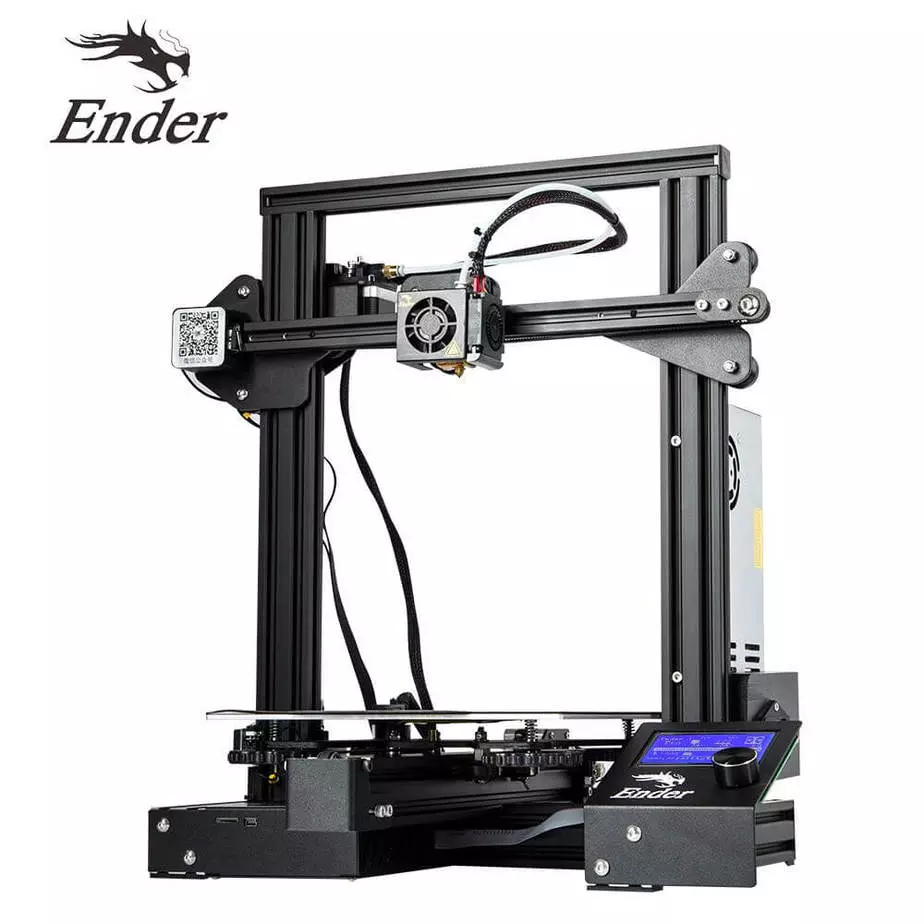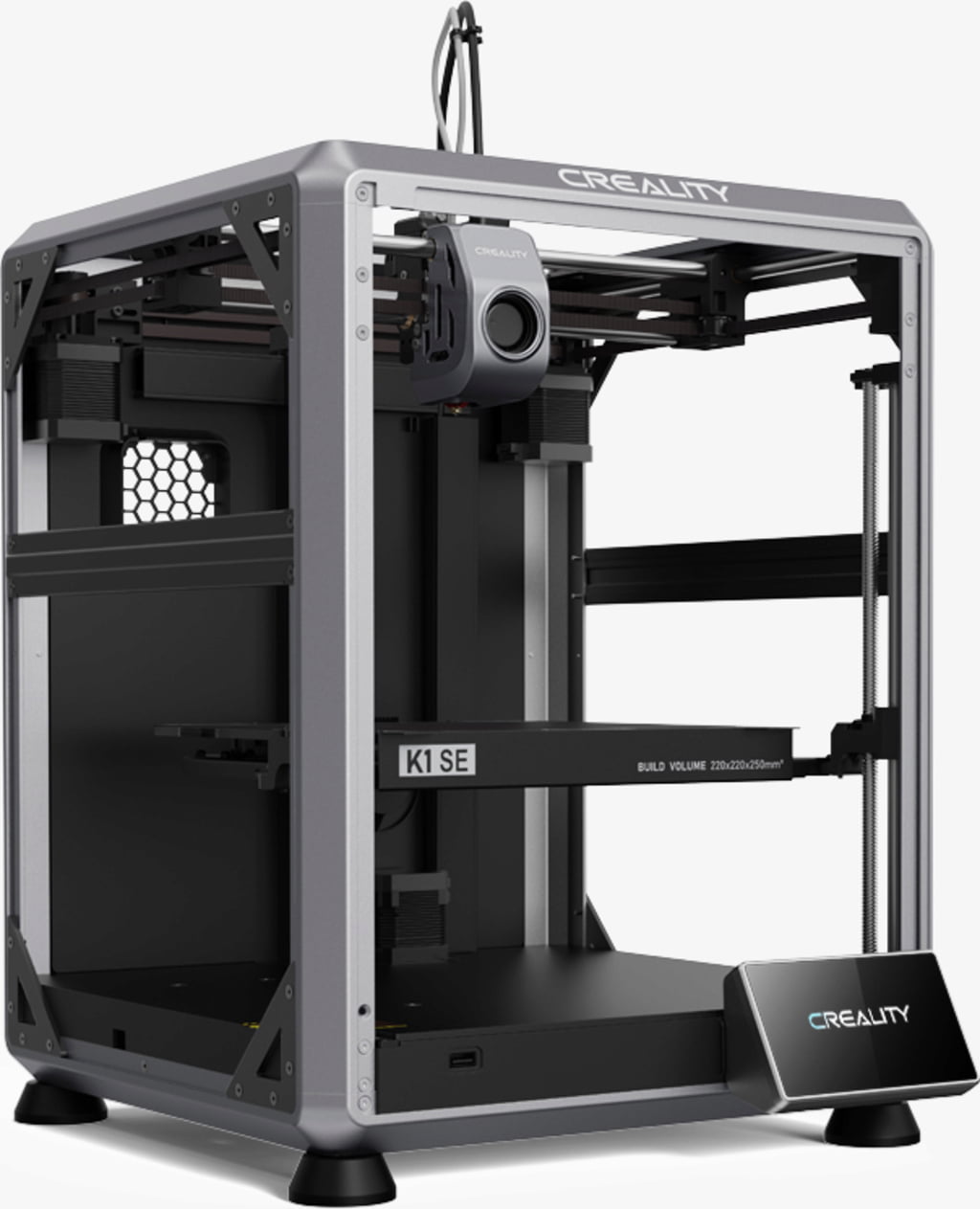Compare Ender 3 PRO vs K1 SE
Comparison between the best 3D printers
Choose the best 3D printer at the best price. The cheapest 3D printers are here.
Buy a 3D printer here with 3D Fila.
 |
 |
|
| Model | Ender 3 PRO[BUY Ender 3 PRO] |
K1 SE |
| Printing Material | Filament | Filament |
| Buy Filament for Creality 3D Ender 3 PRO | Buy Filament forCreality 3D K1 SE | |
| Estimated price | $258,00 | $349,00 |
| Manufacturer | Creality 3D | Creality 3D |
| Release Year | 2019 | 2023 |
| Print Volume [mm] | 220x220x250 | 220x220x250 |
| Printer Size [mm] | 440x440x465 | 355x355x480 |
| Weight [kg] | 6,62 | 10,24 |
| Power Loss Recovery | NO | YES |
| Enclosed printer | NO | NO |
| Bed Leveling | Manual | Automatic |
| Filament End Sensor | NO | YES |
| Bed type | Heated | Heated |
| Power supply system | Bowden | Direct Drive |
| Standard nozzle | 0,4 | 0,4 |
| Maximum Nozzle Temperature [°C] | 255 | 300 |
| Maximum Bed Temperature [°C] | 110 | 100 |
| Maximum printing speed [mm/s] | 180 | 600 |
| Filament holder | YES | YES |
| Camera for supervision | NO | NO |
| Recommended filaments | PLA, TPU, ABS, PETG | Hyper PLA, PLA, PETG, PET, TPU |
| Recommended slicers | Cura, Simplify, Slic3r | Creality Print; Cura, Simplify3D e PrusaSlicer |
| Maximum Resolution [mm] | 0,1 | 0,1 |
| Processor | 32 bits | |
| Display | Mono | Display touchscreen 4,3'' |
| Power Supply | 24V / 360W Meanwell | 110/220V / 350W |
| Connectivity | SD / USB | Ethernet / USB / Wi-Fi |
| Operating systems | Windows, Mac, Linux | Windows, Mac, Linux |
| Date of registration in the system | 2021-04-14 | 2023-08-26 |
| Release date | 2019 | 2023 |
| Extra features | The Ender 3 Pro stands out for its beginner-friendly assembly and easily modifiable structure. With a 350W power supply, it heats up quickly and has a simple application that offers good print quality. However, its motors and fans are noisy, and the interface seems outdated. Assembly is accessible, without the need for advanced techniques, and it has integrated belt tensioners. It includes a detailed guide and supports microSD card and USB. | The Creality K1 SE is a high-speed 3D printer with CoreXY system, capable of printing at up to 600mm/s with acceleration of 20000mm/s². It has a dual-gear extruder, easy-to-replace tri-metal nozzle, automatic leveling, and advanced features such as vibration reduction algorithms and intelligent operation. Its rigid cast aluminum frame ensures stability, while the open-source Klipper-based system offers freedom for customization. It is pre-assembled for a simplified and fast user experience. |
| Support for multiple colors and materials (AMS and CFS) | NO | NO |
Notes * |
||
| Cost-benefit | 6 / 10 | 7 / 10 |
| Hardware | 0.5 / 10 | 3.5 / 10 |
| Tela | . | . |
| Print volume | 3 / 10 | 3 / 10 |
| Performance | 1 / 10 | 5 / 10 |
| [BUY Ender 3 PRO] |
Conclusion |
| In comparing the Ender 3 PRO and the K1 SE 3D printers, notable distinctions emerge that cater to different user needs and budgets. The Ender 3 PRO, being a more established model from 2019, is priced lower and offers a manual leveling system, which may appeal to beginners who prefer hands-on assembly and adjustments. Its features, while basic, allow for good print quality, especially for those new to 3D printing. Conversely, the K1 SE, launched in 2023, is positioned as a high-performance printer with advanced capabilities. It offers automatic leveling, a faster maximum printing speed, and features like power loss recovery and dual-gear extruding, which significantly enhance user convenience and print quality. Furthermore, its robust design and extensive connectivity options make it ideal for users seeking more sophisticated features and efficiency. Ultimately, the decision hinges on user experience level and printing requirements. For those just starting or with budgetary constraints, the Ender 3 PRO presents a solid, cost-effective option. Meanwhile, users looking for cutting-edge technology and performance may find the K1 SE justifies its higher price with its modern features and faster capabilities. |

